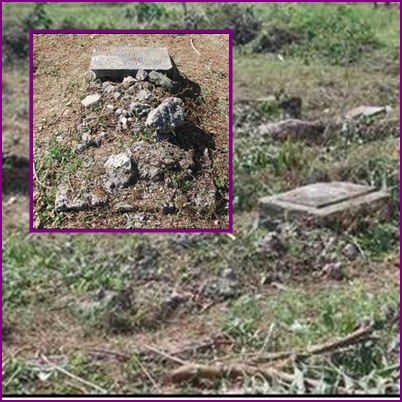Carmel Moravian Cemetery

Parish: St. Elizabeth
History of Moravians in Jamaica
The earliest Moravian Mission began its work in Jamaica in 1754. William Foster and his brother Joseph Foster Barham, who were absentee proprietors of sugar plantations applied to the Moravian Church in England for Missionaries to preach to their slaves. They gave instructions for their overseers to allot land for Mission Stations at Bogue in St. James, Carmel also known as New River in St. Elizabeth and at Barhams known as Mesopotamia in Westmoreland. At Carmel the missionaries acquired 700 acres of land and not having any other means of support; they set up an agricultural enterprise with cattle, logwood and other crops, which covered their expenses; only 300 acres were cultivable, the rest being wetlands. It became a separate mission station in 1756.
At first they named the station New Carmel, but its name was changed to Old Carmel when New Carmel was launched in Westmoreland; “Carmel” is Hebrew for a garden, orchard or vineyard. Like the other two stations a church was erected at Carmel. In describing what he witnessed Buchner wrote: Here the Brethren, after some time, built the largest house that I have seen in Jamaica. It is eighty-four feet by fifty-four, and twenty feet high. It contains in the centre a large hall, which served as a chapel, capable of accommodating 200 hearers; a passage runs round this hall, by which it is separated from the dwelling-rooms on each side of the house”. They also owned slaves, the only source of labour at the time, but this discredited them with the slaves they were trying to convert.
By 1823 Carmel was sold for £612.00 and the slaves were liberated; only the cemetery where the missioners – 13 brethren, 11 sisters and 5 children – were buried was reserved. The section of the allotted land which was utilized as the cemetery now houses graves with gravestones bearing the names of some of the earliest missionaries who originated from Germany and Central Europe.
Sources:
- Adams, C.D. (1972), Flowering Plants of Jamaica (Glasgow, University Press).
- Atwood, Craig D.2004 Community of the Cross: Moravian Piety in Colonial Bethlehem, Pennsylvania State University Press, University Park, PA
- Engel, Katherine Carté 2009 Religion and Profit: Moravians in Early America. University of Pennsylvania Press, Philadelphia.
- Espeut, Peter (forthcoming) An Encyclopaedia of Geographical (place and Street) Names in Jamaica past and Present with historical and biographical notes, anecdotes and legends
- Ferguson, Leland 2011 God’s Fields: Landscape, Religion, and Race in Moravian Wachovia. University Press of Florida, Gainesville
- Gillespie, Michele, and Robert Beachy 2007a Introduction in Pious Pursuits: German Moraviansin the Atlantic World, Michele Gillespie and Robert Beachy, editors, pp. 1–19. Berghahn, New York, NY
- Gillespie, Michele and Robert Beachy (editors) 2007b Pious Pursuits: German Moravians in the Atlantic World, Berghahn, New York, NY
- Lenik , Stephan T. and Brenda Hornsby Heindl “Missionaries, Artisans, and Transatlantic Exchange: Production and Distribution of Moravian Pottery in Pennsylvania and the Danish (U.S.) Virgin Islands” in HISTORICAL ARCHAEOLOGY 48(4)
- Lewis, Arthur J. 1962 “Zinzendorf the Ecumenical Pioneer: A Study in the Moravian Contribution to Christian Mission and Unity.” Moravian Church in America, Bethlehem, PA
- Vogt, Peter 2006 “Everywhere at Home”: The Eighteenth-Century Moravian Movement as a Transatlantic Religious Community. Journal of Moravian History 1:7–29.
SHOWCASE
|
SHOWCASE
|
SHOWCASE
|


